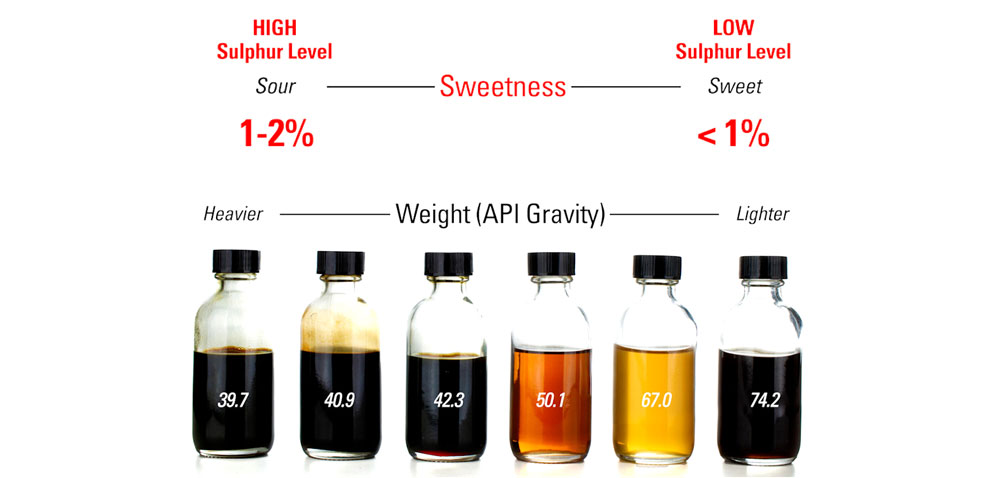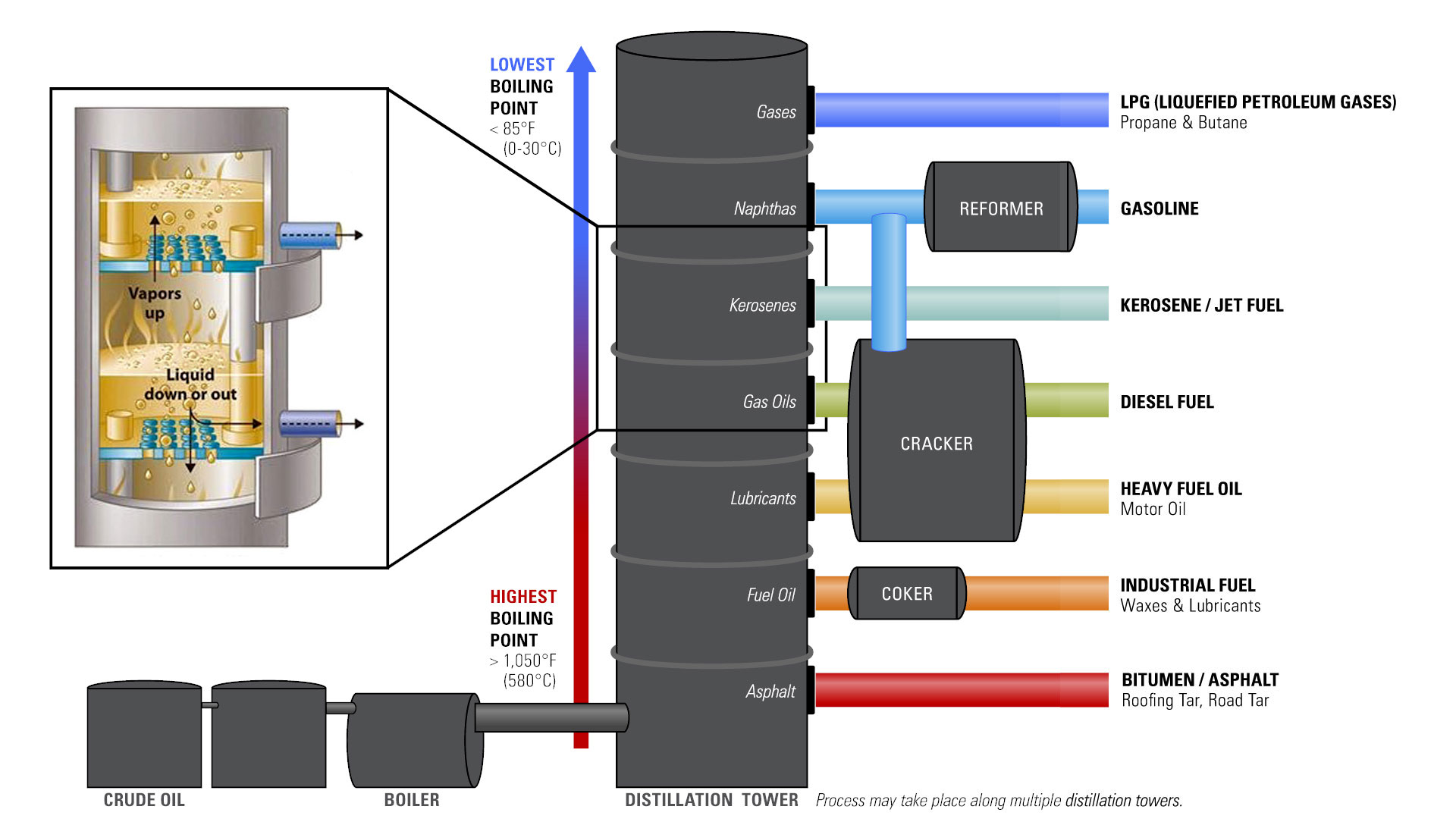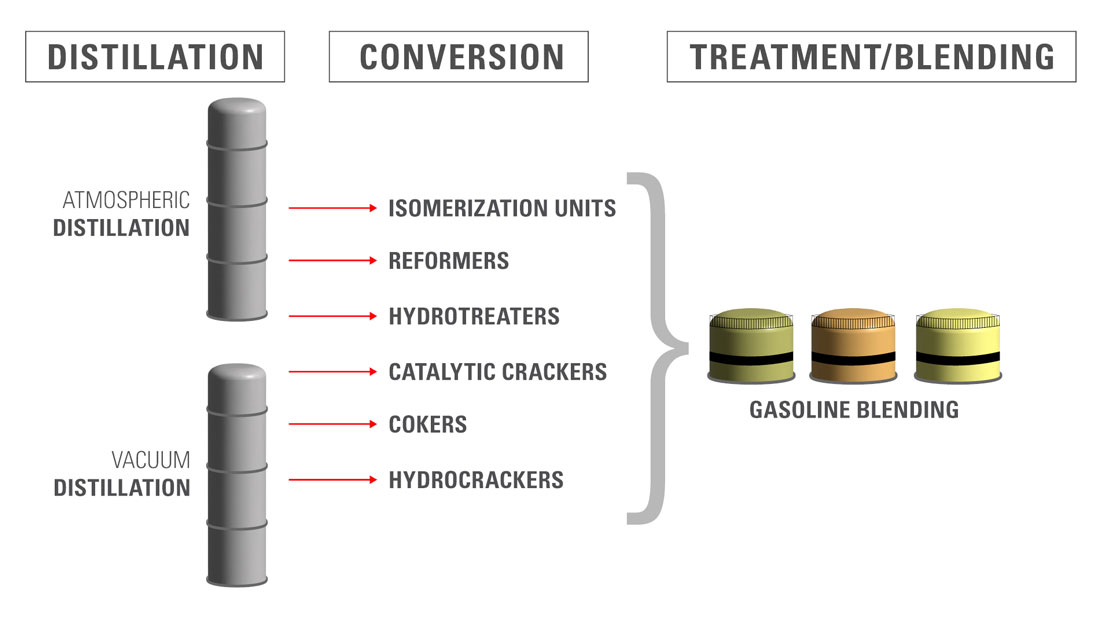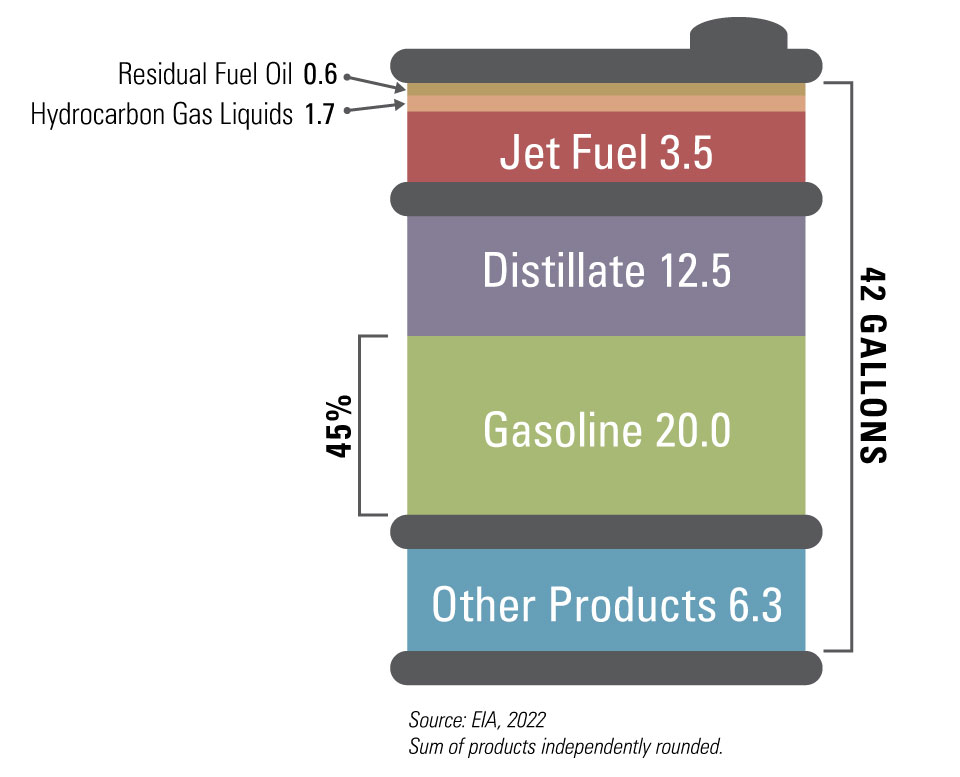Gasoline is made from petroleum oil through the refinery process, which includes Distillation, Conversion, and Treatment.
According to the U.S. Department of Transportation, the average American driver puts more than 13,000 miles on their vehicle every year.
To cover all that ground, we fill our tanks with 500 gallons of gasoline.
Most of us know gasoline is tied to oil. But is gasoline made from oil? In this article, we’ll cover a few basics of the gasoline refining process.
Is Gasoline Made From Oil?
Crude oil that comes out of the ground has to go through a lot before it gets to your car.
When producers extract it from the ground, they run it through initial separation at the well site. Then midstream companies pipe it downstream to refineries for further processing and separation.
The best kind of oil has two characteristics:
- Low Specific Gravity. Specific gravity refers to how “thick” or heavy the crude is. The thicker and heavier it is, the more processing that is required and the harder it is to make gasoline.
- Low Sulfur. All crude contains some level of sulfur. Oil that’s lower in sulfur is called “sweet” oil; oil that’s higher in sulfur is called “sour” oil.
The ideal oil for gasoline production is both “light” and “sweet.”

How is Gasoline Produced?
Every day, 647 million gallons of oil are refined. This takes place at the large, multi-faceted processing plants called oil refineries.

At the refineries, three primary processes take place: Distillation, Conversion, and Treatment.
- During distillation, the oil is heated and separated. This is done in either crude towers or vacuum towers.
- During conversion, companies add chemicals, catalysts, pressures, and heat to the oil in vessels called cokers, hydro-crackers, or fluidized catalytic crackers. This process is used to “crack” the larger hydrocarbons into smaller ones.
- During treatment (or blending), the elements are blended to make the various types of products that are useable as engine fuel.
The final products are then distributed by retailers as something you may recognize: high or low octane gasoline, diesel, biodiesel, or gasoline with ethanol.

How Much Oil is Used For Gasoline?
The standard unit of measurement for produced oil is a barrel, or BBL, which amounts to 42 gallons.
Of these 42 gallons, 20 gallons are used for gasoline, 12.5 are used for lower octane fuels such as diesel, 3.5 are used for jet fuel, and 6.3 are used for various petroleum products.









































